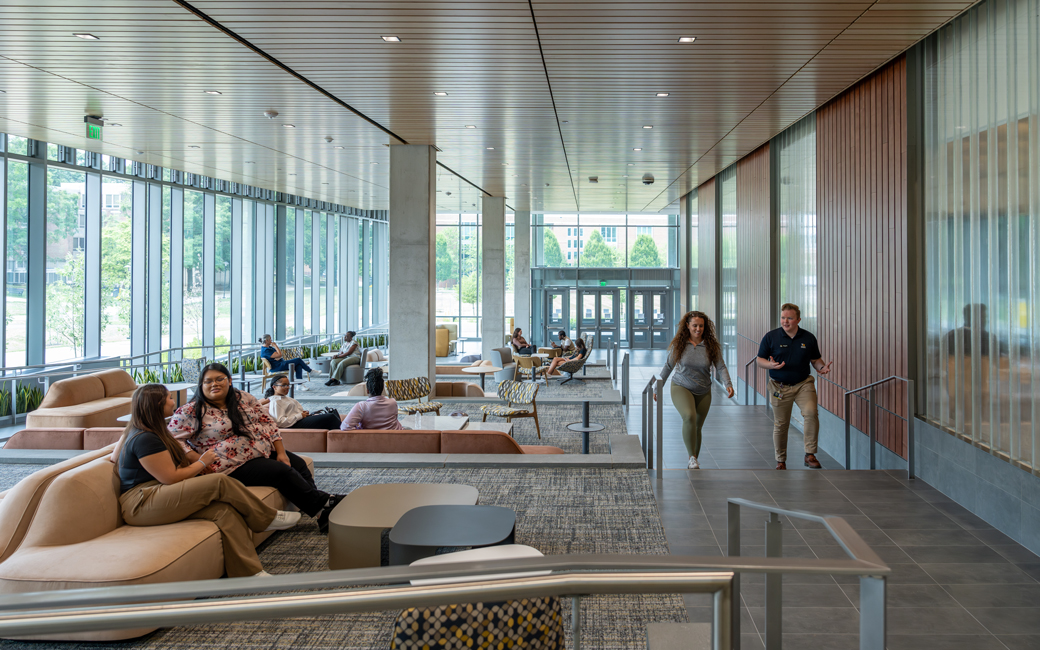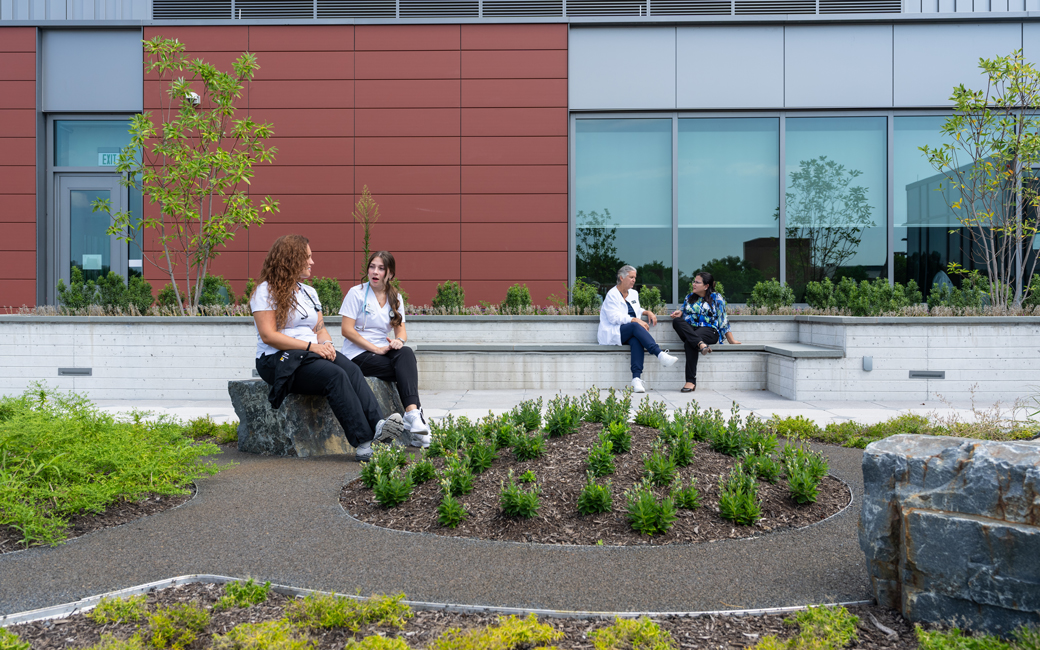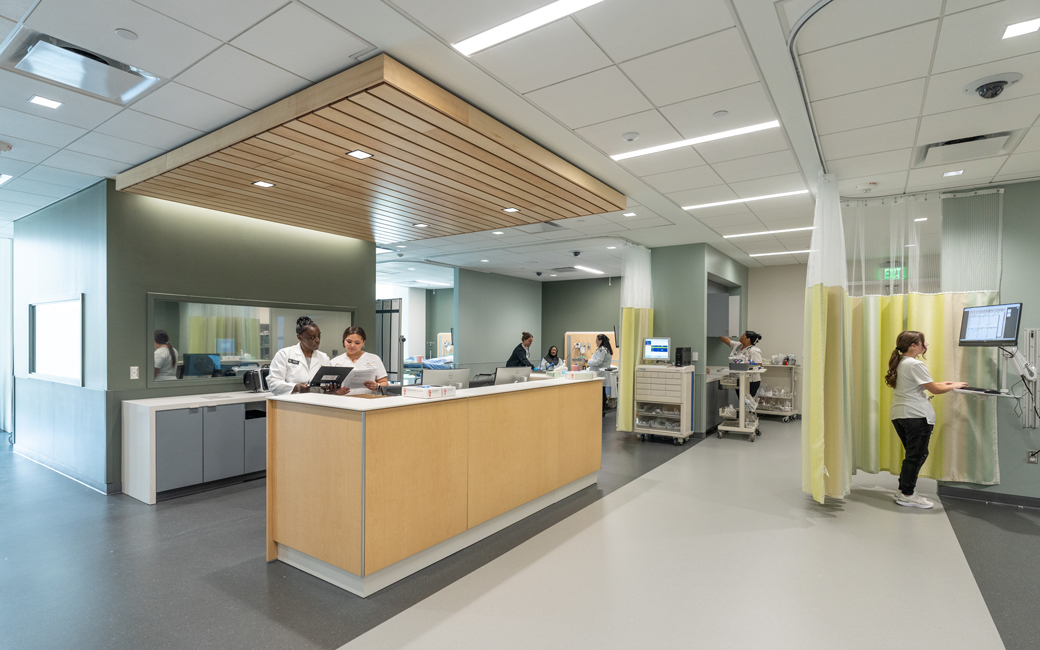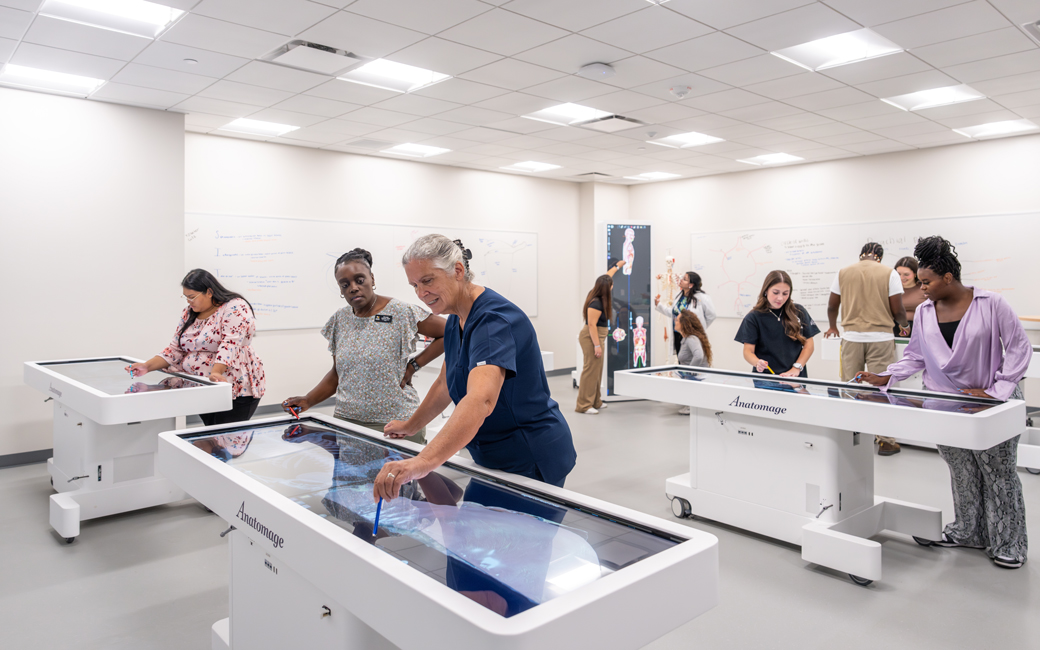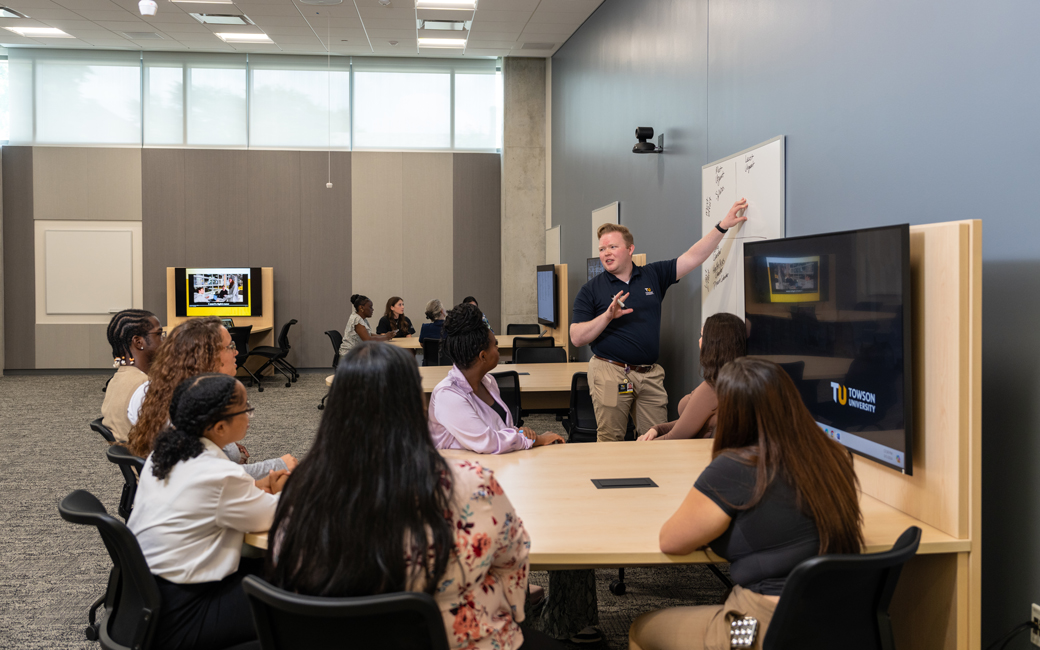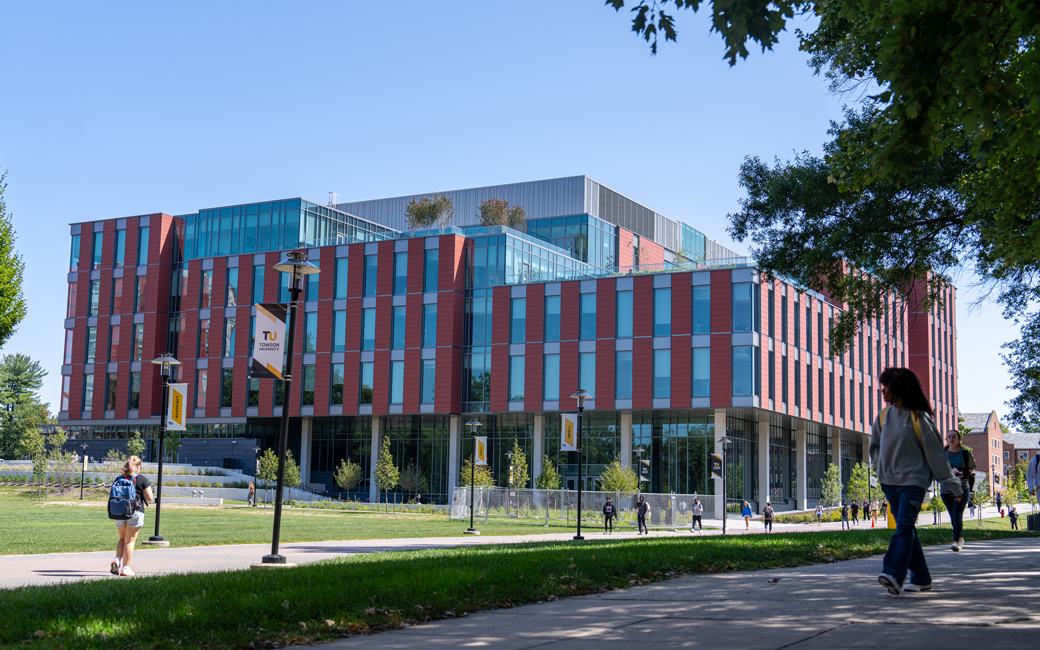
A Q&A with Lisa Plowfield, dean of the College of Health Professions
Dean Plowfield talks about the new Health Professions Building, TU's readiness to meet future demands in health care
By Kyle Hobstetter on September 12, 2024
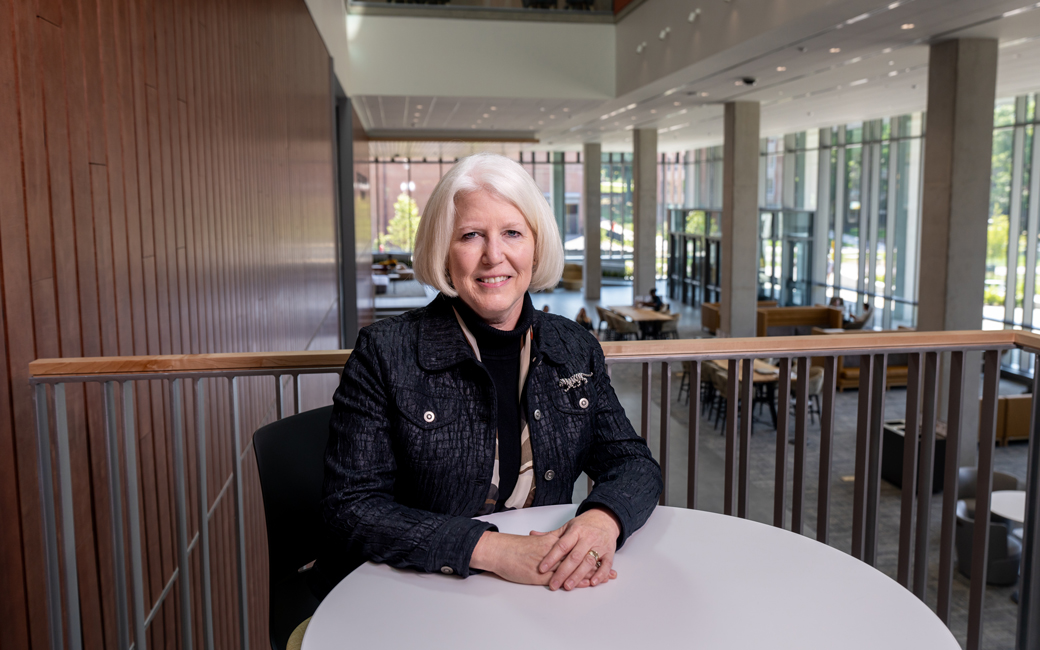
Towson University’s College of Health Professions (CHP) has long been a center of excellence for education and preparation of professionals in health and wellness.
Starting this fall, CHP has a new home with the opening of the state-of-the-art Health Professions Building. The building has been designed to be a leading center for interprofessional health and wellness education.
It will provide TU students opportunities to learn in the classroom and beyond using cutting-edge technology, real-world simulation, clinical practice and community outreach. Before they graduate, students will also become well-prepared and highly skilled health professionals and leaders through immersive and real-world learning experiences.
Learn more about the new Health Professions Building
Dean Lisa Plowfield, Ph.D., RN, has been instrumental in leading the efforts behind CHP and the new Health Professions Building. Towson University sat down with her to explore how this facility will further TU’s mission to prepare the next generation of health professionals.
After a long journey, what does it mean to finally be opening the Health Professions Building?
It is a moment of immense pride and accomplishment for our entire college and university. This building represents not just the culmination of years of planning, collaboration and dedication but also a bold step forward in how we prepare the next generation of health care professionals. It’s a physical manifestation of our commitment to providing top-tier education, fostering interprofessional collaboration and ensuring our students have access to the most advanced tools and technology available.
For me personally, this milestone is incredibly meaningful. I’ve witnessed firsthand the passion our faculty, staff and students bring to their work, and I know this new space will further ignite that enthusiasm. It’s not just about a building; it’s about creating an environment where our students can thrive, innovate and, ultimately, make a profound difference in the lives of others. I am excited to see how this new facility will shape and advance the future of health professions education at Towson University.
You were very hands-on in designing the building. What was your overarching vision when deciding what features went into the Health Professions building?
My vision was to create a state-of-the-art learning environment that blends academic excellence with a focus on well-being while also setting a standard for what students can expect in their professional careers. Central to this vision was the inclusion of high-end finishes, modern furniture and bright, open spaces that reflect a sophisticated, upscale learning environment. Every detail, from the sleek design elements to the calming colors and abundant natural light, was carefully chosen to create an inviting, professional atmosphere that students and faculty will enjoy being in every day. The goal was to foster a sense of pride in the space while providing an environment that encourages focus, comfort and collaboration.
Beyond just being a beautiful space, the design was also intended to mirror the settings that students will encounter in their future professional environments. We want them to feel confident and comfortable navigating modern, high-end health care facilities from day one. Whether it's the advanced simulation centers that mimic real-world patient care scenarios or the informal collaboration areas where students can gather and exchange ideas, every feature was selected with an eye toward preparing students for the professional spaces they will eventually work in. By experiencing these upscale, thoughtfully designed areas, students will be better equipped to transition seamlessly into their careers, knowing they are prepared for the environments they will encounter.
What are some key features of the new building that you are particularly excited about?
One of the most exciting features of the new Health Professions Building is its state-of-the-art simulation centers, including the acute care, multipatient care and the primary care clinic units. These spaces offer students the chance to engage in hands-on learning within safe, realistic environments. The simulation facilities not only provide invaluable opportunities for practice but also allow for real-time feedback from faculty, ensuring that students are thoroughly prepared before entering professional practice. This focus on experiential learning is essential for helping students develop the skills needed to succeed in their health care careers.
Additionally, the building boasts a 350-seat auditorium, offering students across all health disciplines the chance to collaborate and reflecting the team-based approach in modern health care. The building also emphasizes the health and well-being of students, faculty and staff by incorporating natural elements such as calming colors, abundant natural light, accessible and walkable spaces and rooftop gardens. These features create a welcoming environment that fosters academic success and personal growth.
What cutting-edge technologies or innovations have been incorporated?
Several cutting-edge technologies and innovations have been incorporated into the new building and are designed to elevate both the learning environment and overall functionality of the space. In addition to the advanced simulation centers, the Keady Virtual Body Lab (our digital cadaver lab, aka Anatomage Lab) and other specialty areas listed above, high-tech mannequins are employed for clinical skills and health assessments spaces. These mannequins can be programmed to mimic real-world scenarios, allowing students to respond to dynamic medical situations in a controlled, realistic setting. Another standout feature is the immersive artificial reality (AR) labs, where students will be able to refine their skills in simulated environments that closely mirror real-world health care settings. This technology provides invaluable hands-on experience with complex cases in a safe, controlled space.
Every classroom is equipped with full video and recording capabilities, and the collaboration classrooms and spaces are designed for group work around individual monitors. Faculty can project specific content to each screen or share the same material across all monitors, while students can wirelessly connect their devices to share content, fostering a seamless, interactive learning experience.
The building is also one of the most automated and technologically advanced on campus. It is designed to achieve LEED Gold certification, reflecting a strong commitment to sustainability and energy efficiency.
How will this building support CHP's readiness to meet future demands in the health care industry?
The new Health Professions Building is designed to support the college in preparing for the evolving demands of the health care industry. By offering advanced technologies and flexible, modern learning environments, the building helps equip students with the hands-on skills and experiences they need to thrive in an increasingly complex health care landscape. Its simulation centers, high-tech labs and collaborative learning spaces provide students with opportunities to practice critical skills in realistic settings, helping them become adaptable and prepared for the challenges of modern health care.
Additionally, the building fosters interdisciplinary collaboration, which is vital in today’s health care environments. By bringing multiple health disciplines under one roof, it creates opportunities for students to engage in teamwork and develop the communication skills essential for success in integrated health care teams. The building's flexible classrooms, research spaces and faculty–student collaboration zones further enhance innovative thinking and problem-solving, positioning CHP students to lead in a dynamic and ever-changing industry.
